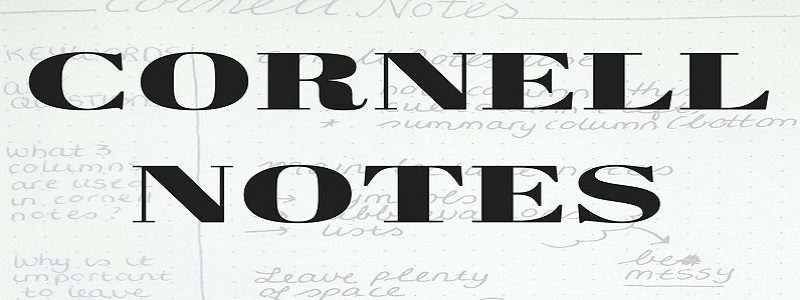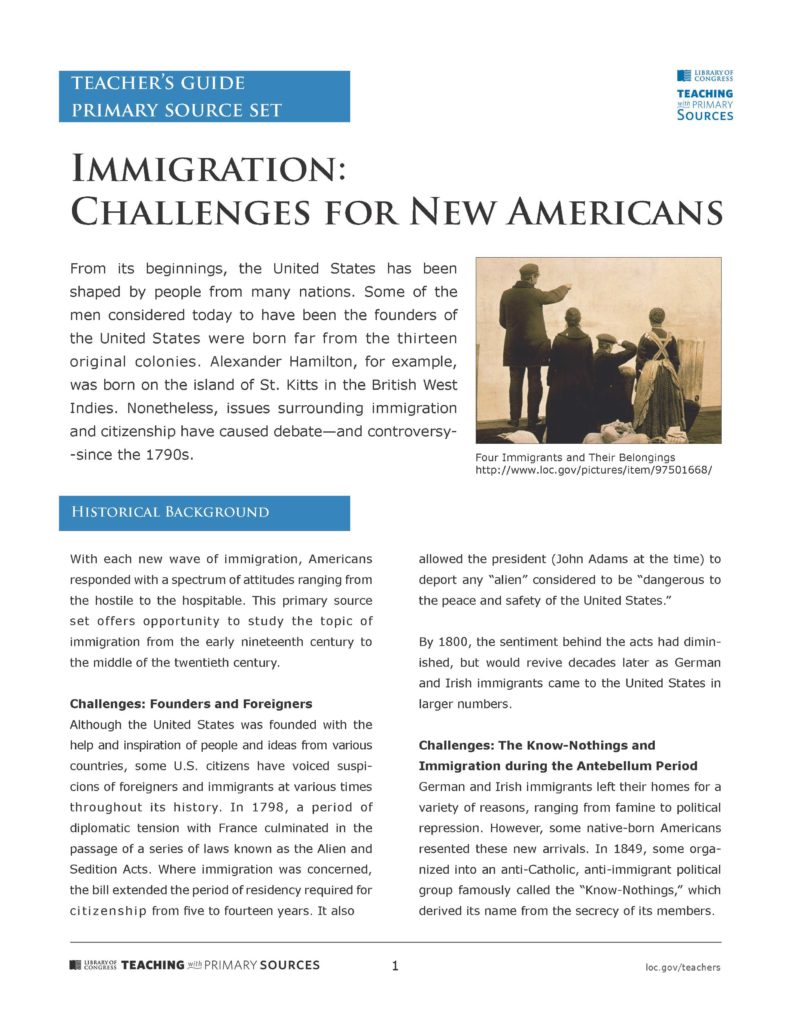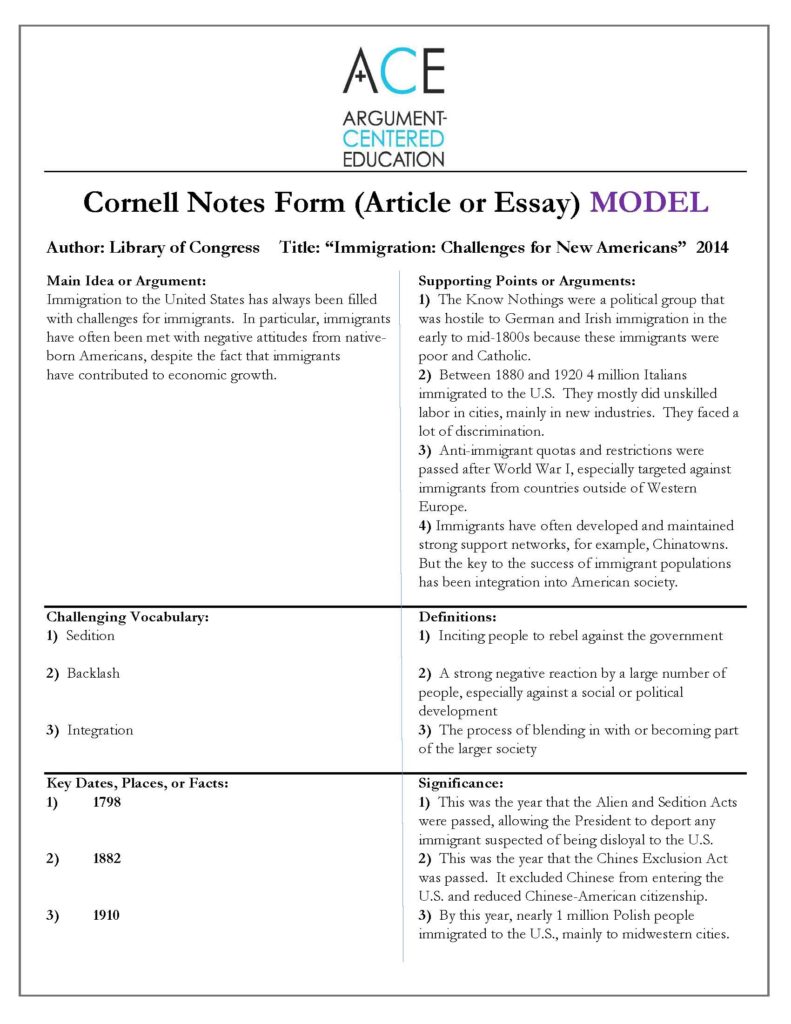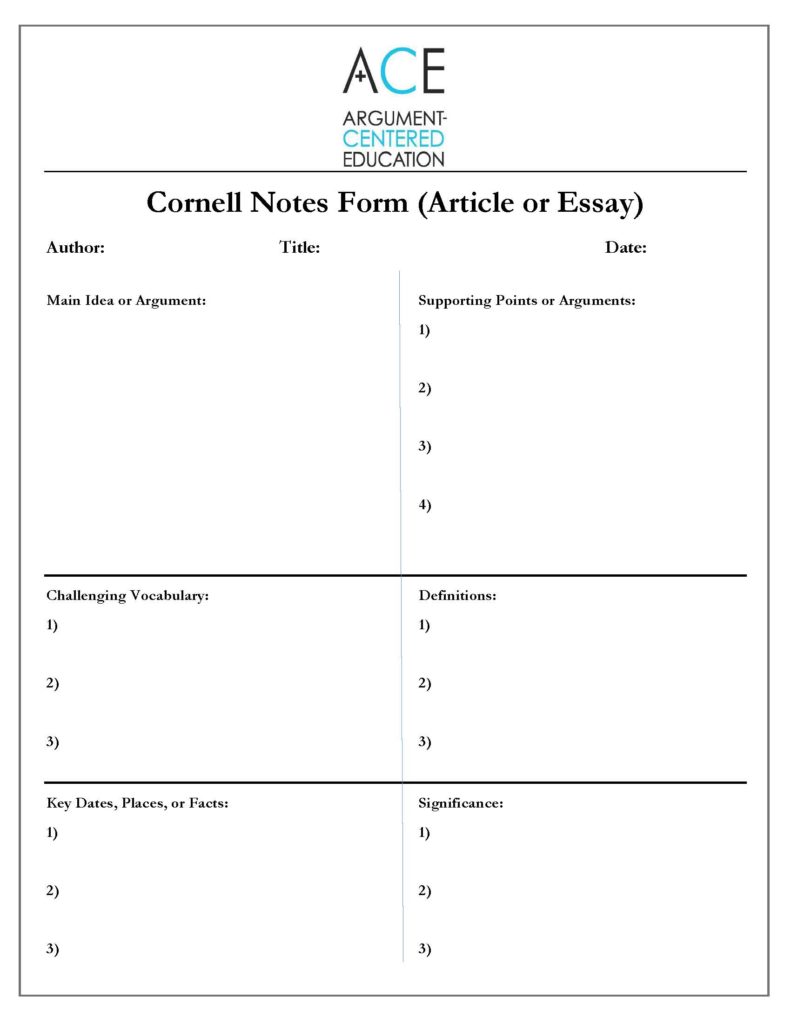
Cornell Notes à la Argument
We developed a model of a completed argumentalized Cornell Notes form, too, on an article that we used with a partner middle school earlier this year in their classroom debates on immigration. The article is Library of Congress short overview, titled “Immigration: Challenges for New Americans.”

This article is factual exposition and is in the Background/Both Sides category of the Immigration Media List in an argument-centered unit on immigration. For that reason, the Cornell Notes model only includes the first page, not the second page in which students quote up to four passages from the article or essay, copy those in the left column, and state the position the passages support and an argumentative claim that can be inferred from the passage in the right column. This second page, more directly argument-based annotation, is better suited for the articles that support one side or the other of the issue (whether the U.S. should embrace relatively high levels of immigration, or restrict and reduce immigration).

In researching a bit for this post, I was led to an intriguing project called Open Annotation. Kathleen Shulten, of the Learning Center, and Jeremy Dean, director of education at Hypothes.is delve into the idea in this article. And the article parallels their 2016 presentation at the National Council of Teachers of English on annotation.

As they say in the article, our students can develop the “habit of making notes in the margins of books quickly begin to feel . . . like something more intense: a way to not just passively read but to fully enter a text, to collaborate with it, to mingle with an author on some kind of primary textual plane.” Schulten and Dean suggest that annotation in traditional ways can feel to students artificial. But, they counter, annotation is now thoroughly encoded into digital literacy and the way that students today read and learn about the world. They quote writer Sam Anderson: “We are living increasingly in a culture of response. Twitter is basically electronic marginalia on everything in the world: jokes, sports, revolutions. The best parallel in critical writing might be online episode recaps of TV shows: a viewer rolling around in a work of art, noticing it deeply, not just (as critics too often do) resorting to distant acts of intellection. Marginalia is literature’s TV recap, although even more satisfying: real-time commentary happening in the core of the thing being commented upon.” Schulten and Dean go on to itemize and develop eight different ways students can engage in “open annotation” in or for the classroom, including one that they call Annotating for Argument.
There is a lot of substance in this article; these two education theorists and writers have done a lot of thinking about the way that annotation can work for schools and students in the digital age. The Debatifier will return to some of the highlights of their thinking in a future post.


